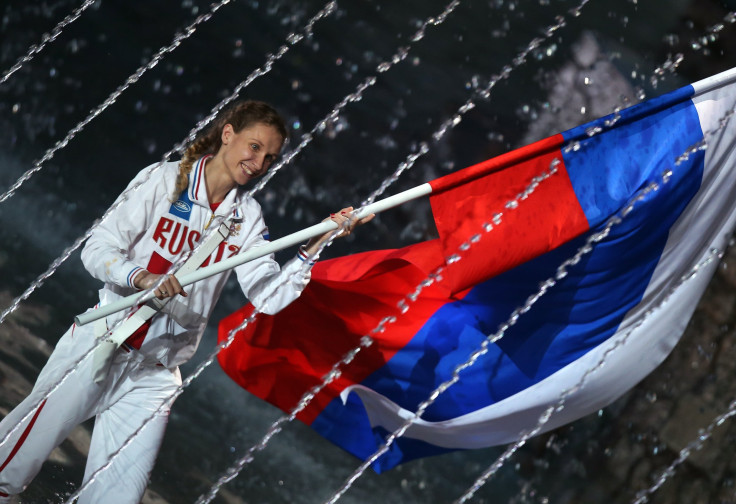Flag Day 2015 Russia: 10 Things To Know About This Red, White And Blue Banner

Russia's Flag Day may not be a public holiday, but it that country it merits celebrations every Aug. 22 nonetheless. The flag itself, a centuries-old symbol, has been used the flag of modern Russia only since 1991. Like the American flag, it is red, white and blue -- but its background is considerably different.
Here are 10 things to know about this simple red, white and blue banner with a rich and varied history.
1. The flag was first officially adopted Jan. 20, 1705. Czar Peter the Great ordered merchant vessels to fly the banner, which was first raised on the warship the Eagle, under the reign of Alexei Mikhailovich, who was Peter's father.
2. The Russian navy then used the flag to mark territory. In 1806, a group of Russian explorers hoisted it, along with the navy's flag, on Southern Sakhalin, to show that the North Pacific island belonged to Russia.
3. In 1896, the night before Nicholas II became czar, the flag was officially adopted as the national flag of Russia.
4. Each of the three colors is symbolic. The red represents the state, the blue represents Russia's protector, the Virgin Mary, and the white represents freedom, according to Russia's Sputnik News.
5. In 1923, after the Bolshevik Revolution, the Communist Party's red banner with a yellow hammer and sickle replaced the red, white and blue banner of imperial Russia.
6. After the collapse of the Soviet Union, the tricolored flag returned in August 1991. Flag Day became an annual holiday in 1994.
7. A year 2000 law originally ordered that the flag be used only on official occasions. But with the passage of a different law in 2014, the flag may now be used in any circumstances that express patriotism.
8. Flag Day is not an official holiday but is celebrated widely. In 2013, more than 40 events in Moscow alone commemorated the day, the Moscow Times reported.
9. A recent poll showed 64 percent of Russian respondents could name the colors in the flag and their position in the flag. Seven percent were not able to name either.
10. Some say the flag represents the idea of pan-Slavism, with white representing Belarus or "White Russia," blue standing for Ukraine, and red symbolizing Russia itself, Sputnik reported.
© Copyright IBTimes 2025. All rights reserved.






















